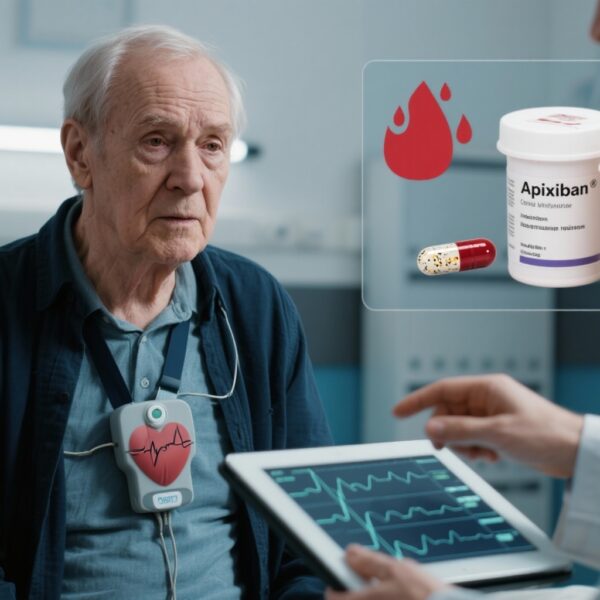Highlight
– In a retrospective cohort of 282,131 general surgery patients, 36% had diagnosed diabetes and 6.4% had HbA1c in the diabetes range without a prior diagnosis.
– Higher preoperative HbA1c was independently associated with progressively increased odds of 30‑day postoperative complications, with HbA1c >9.0% conferring the greatest risk (OR 1.32; 95% CI, 1.25–1.39) in patients with known diabetes.
– Undiagnosed diabetes (HbA1c >6.4% without a diagnosis) was associated with higher medical complications (OR 1.11; 95% CI, 1.04–1.18) and mortality (OR 1.24; 95% CI, 1.07–1.42).
– The findings support consideration of routine preoperative HbA1c screening and tailored perioperative glycemic management to improve risk assessment and outcomes.
Background: disease burden and clinical context
Perioperative dysglycemia—both chronic hyperglycemia (reflected by HbA1c) and acute hyperglycemia—has long been implicated in adverse postoperative outcomes, including surgical site infection (SSI), delayed wound healing, cardiopulmonary complications, and increased length of stay. Historically, perioperative attention has focused on inpatient glucose control, but preoperative identification of chronic glycemic status provides an opportunity to stratify risk and optimize patients before elective procedures. The clinical utility of routine preoperative HbA1c measurement in unselected general surgery cohorts has been uncertain, and thresholds for action (delay, optimization, or intensified perioperative management) are debated.
Study design
Study type and data source
This retrospective cohort study used data from the American College of Surgeons National Surgical Quality Improvement Program (ACS NSQIP) from 2021 to 2023, a large multicenter registry with contributions from >700 institutions, predominantly in the United States.
Population and inclusion
Adults aged ≥18 years undergoing general surgery procedures with available preoperative HbA1c values were included. Glycemic status was categorized by a documented diabetes diagnosis and HbA1c ranges; patients without a diabetes diagnosis but with HbA1c >6.4% were classified as having undiagnosed diabetes.
Exposures and outcomes
Primary exposure: preoperative glycemic status as defined by HbA1c categories (normoglycemia, prediabetes, diabetes-range with varying levels of control). Primary outcomes: 30‑day any complication, surgical complications, medical complications, readmission, reoperation, and mortality. Multivariable logistic regression adjusted for demographic, procedural, and comorbidity confounders.
Key findings
Prevalence of dysglycemia
Among 282,131 patients (mean age 60 ± 15 years), 36% had a diagnosis of diabetes. An additional 6.4% of patients had HbA1c values in the diabetes range (>6.4%) without a documented diagnosis—identifying a sizable subgroup with previously unrecognized chronic hyperglycemia.
Association between HbA1c and 30‑day outcomes
In patients with known diabetes, there was a graded association between higher HbA1c categories and the odds of any 30‑day complication. Compared with near‑normal HbA1c (9.0%) associated with an OR for any complication of 1.32 (95% CI, 1.25–1.39). Even modest elevations in HbA1c were linked to incremental risk; HbA1c below diabetes threshold but above normal was associated with small but measurable increases in complication odds (e.g., HbA1c 6.4% without documented diagnosis) had higher adjusted odds of medical complications (OR 1.11; 95% CI, 1.04–1.18) and mortality (OR 1.24; 95% CI, 1.07–1.42) within 30 days, relative to normoglycemic patients. Readmission and reoperation were also more frequent among those with higher HbA1c, though effect sizes varied by outcome and HbA1c stratum.
Clinical and statistical significance
The associations persisted after adjustment for multiple covariates, suggesting an independent relationship between chronic glycemia and postoperative risk. Effect sizes were modest to moderate for many endpoints (ORs ~1.1–1.3), which, given the high prevalence of dysglycemia, translate into meaningful population‑level impacts on postoperative morbidity and healthcare utilization.
Expert commentary and interpretation
Biological plausibility
Chronic hyperglycemia impairs innate and adaptive immune function, diminishes neutrophil chemotaxis and phagocytosis, and promotes a pro‑inflammatory and procoagulant milieu—mechanisms that credibly increase susceptibility to infection, poor wound healing, and cardiometabolic complications. Acute hyperglycemia in the perioperative period further exacerbates these effects.
How this fits with existing evidence and guidelines
Prior studies have linked elevated preoperative HbA1c to higher rates of SSI and other complications in specific surgical populations (e.g., orthopedic arthroplasty, cardiac surgery). The current multicenter NSQIP analysis expands these observations to a large, heterogeneous general surgery population and quantifies risk across HbA1c strata, including the clinically important group with undiagnosed diabetes.
Guidelines for perioperative glycemic management emphasize avoiding severe hyperglycemia and hypoglycemia but differ on screening recommendations for HbA1c in unselected patients. The Centers for Disease Control and Prevention 2017 SSI prevention guideline underscores glucose control as a modifiable risk factor for infection, and the American Diabetes Association (Standards of Care) highlights preoperative assessment and individualized perioperative planning for patients with diabetes. The present findings strengthen the argument for systematic preoperative HbA1c assessment—particularly for elective operations where optimization is feasible.
Limitations and generalizability
Key study limitations include its retrospective design and reliance on registry data. HbA1c was available only for a subset of surgical patients, which introduces selection bias: clinicians may have preferentially measured HbA1c in patients perceived to be at higher metabolic risk. Residual confounding remains possible despite multivariable adjustment. NSQIP captures 30‑day outcomes but cannot address long‑term consequences. Finally, association does not prove that preoperative identification and optimization of HbA1c will reduce complications—prospective interventional trials are required to determine the benefit and feasibility of preoperative glycemic optimization strategies and the appropriate thresholds for delaying elective surgery.
Clinical implications and practical recommendations
– Consider routine or targeted preoperative HbA1c screening for patients undergoing general surgery, especially for elective procedures and in individuals with risk factors for diabetes (age >45, obesity, family history, prior hyperglycemia, or suggestive symptoms).
– Identify undiagnosed diabetes: an HbA1c >6.4% without prior diagnosis represents a high‑risk group that may benefit from perioperative planning (e.g., stricter inpatient glucose monitoring, early endocrinology consultation).
– For patients with markedly elevated HbA1c (for example >8.0–9.0%), engage in shared decision making about potential benefits of preoperative optimization when timing permits; however, routine automatic postponement of all procedures based on HbA1c alone is not yet evidence‑based and should be individualized.
– During the perioperative period, avoid both severe hyperglycemia and hypoglycemia; follow institutional protocols for glucose monitoring and insulin management. Broadly accepted inpatient glucose targets (e.g., 140–180 mg/dL for most critically ill patients) balance risks of hyperglycemia and hypoglycemia, though ideal targets in immediate postoperative care vary by clinical context.
Research and policy gaps
– Randomized controlled trials are needed to determine whether preoperative HbA1c screening followed by targeted optimization (medical therapy, diabetes education, or structured perioperative glycemic pathways) reduces postoperative complications and is cost‑effective.
– Studies should evaluate which surgical specialties and patient subgroups derive the greatest benefit from screening and optimization.
– Implementation science work is required to design feasible perioperative glycemic pathways that integrate primary care, endocrinology, and surgical teams.
Conclusion
This large multicenter cohort demonstrates that dysglycemia—both diagnosed and previously unrecognized—is common among general surgery patients and is independently associated with higher 30‑day complications, readmissions, and mortality. The findings support broader use of preoperative HbA1c to refine surgical risk assessment and to trigger individualized perioperative glycemic management strategies. Prospective trials are warranted to show whether such screening and optimization translates into better patient‑centered outcomes.
Funding and ClinicalTrials.gov
The primary article did not report industry funding details within the provided summary. This analysis is based on the cited observational study. ClinicalTrials.gov: not applicable.
References
1. Schaschinger T, Niederegger T, Brandt J, et al. Preoperative Hemoglobin A1C, Glycemic Status, and Postoperative Outcomes in General Surgery. JAMA Surg. 2025 Nov 5:e254706. doi:10.1001/jamasurg.2025.4706.
2. Berríos‑Torres SI, Umscheid CA, Bratzler DW, et al. Centers for Disease Control and Prevention Guideline for the Prevention of Surgical Site Infection, 2017. JAMA Surg. 2017;152(8):784–791. doi:10.1001/jamasurg.2017.0904.
3. van den Berghe G, Wouters P, Weekers F, et al. Intensive insulin therapy in critically ill patients. N Engl J Med. 2001;345(19):1359–1367. doi:10.1056/NEJMoa011300.
4. Latham R, Lancaster AD, Covington JF, Paradise M, Ilstrup DM, Fry DE. The association of diabetes and glucose control with surgical‑site infections among cardiothoracic surgery patients. Infect Control Hosp Epidemiol. 2001;22(10):607–612. doi:10.1086/501879.
5. American Diabetes Association. 2024 Standards of Care in Diabetes—2024. Diabetes Care. 2024;47(Suppl 1):S1–S100. (Standards updated annually.)


